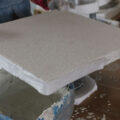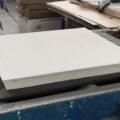With their unique functional characteristics, ceramic filters have become an irreplaceable product in the field of separation and purification. Porous ceramic is a kind of ceramic filter material made of refractory raw material as aggregate, combined with a binder, and sintered at high temperature, and its structure has a large number of fine pores. In addition to its high-temperature resistance, high-pressure resistance, acid resistance, and alkali corrosion resistance, it also has the characteristics of uniform pore size and high permeability. Therefore, Porous Ceramic Filtering Technology is important, it can be widely used as filtration, separation, gas distribution, and sound-absorbing material.
After the 1950s, foreign countries began to use porous ceramics as filter elements for purification of upper and lower water; sterilization of mineral water; purification of oily gas, etc. Today, porous ceramic products have been standardized and serialized. Although the domestic research on the application of porous ceramics in filtration technology started late, the filter has been more comprehensively applied in the field of separation and purification. Such as the separation of liquid ~ solid and gas ~ solid in the petrochemical industry; aseptic purification treatment in the pharmaceutical and brewing industries; and high-temperature flue gas dust removal in the environmental protection industry. With their unique functional characteristics, ceramic filters have become an irreplaceable product in various separation and purification fields.

Porous Ceramic Filtering Technology
Porous ceramic is a filter material that contains more porous holes and uses its structure or surface to achieve the desired performance. The main preparation methods include adding pore-forming agent method, foaming method, organic foam impregnation method, and sol-gel method. Commonly used in the filtration of electrochemical ceramic membranes and molten metals, liquids, gases, etc. Due to the disadvantages of poor reproducibility, high cost, and difficult control of the pore structure, its application is restricted. The application performance can be improved by improving the preparation process, improving the material, and coordinating the relationship between porosity and strength.
The main products of porous ceramic material filtration technology include various specifications of microporous ceramic filter elements and microporous ceramic filters, high-performance ceramic membrane filter elements and ceramic membrane filter devices, high-temperature gas purification ceramic filter materials and high-temperature ceramic dust collectors, Foam ceramic filter element for high-temperature melt filtration, ceramic water purifier, ceramic aerator, ceramic muffler, various ceramic electrolytic diaphragms, etc. Products have been widely used in chemical, pharmaceutical, metallurgy, water treatment, and environmental protection industries.
The research, development, and application of porous ceramic materials abroad have more than 80 years of history, and the research, development, and application of ceramic membrane products have also been for nearly 30 years. The industrialization and commercialization of their products have reached a high level, and the technical level of the products has also Greatly improved.



